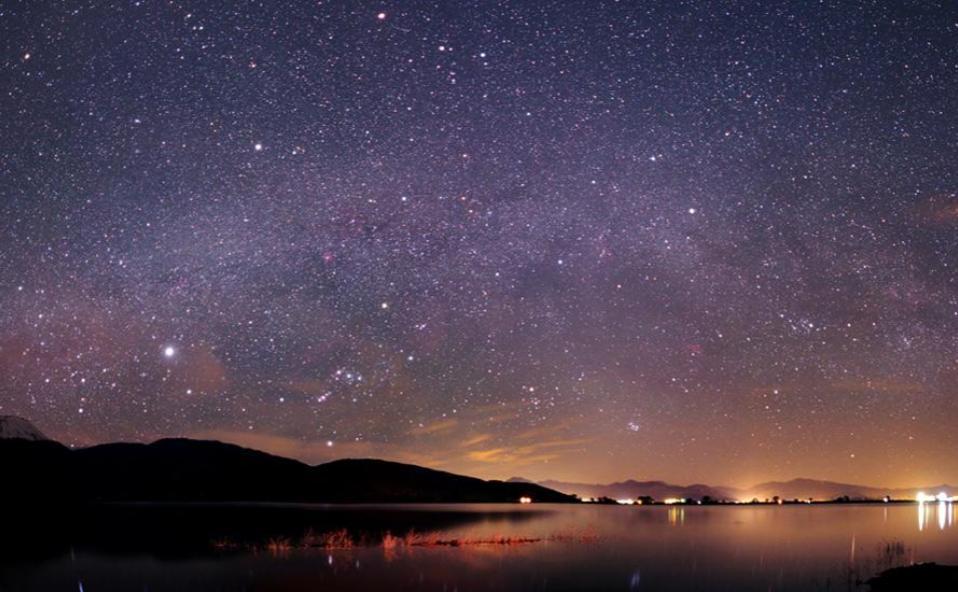The entire month of July will offer opportunities for Sky-Watchers to enjoy observing the planets; not only at dusk and evening, but also at dawn. Innermost planet MERCURY will join brilliant VENUS, which may be spotted just after sunset in the western sky. Fainter MARS will also be nearby. SATURN will come into prominence in the southeastern sky in the several hours before sunrise, and JUPITER will start appearing after midnight, also in the southeastern sky.
Venus’s will start to appear to descend toward the western horizon with each passing night all month, but at the start of July it reaches its maximum brightness and will not set until 2 hours after sunset. It remains unmistakably visible well into a dark evening. Venus and Mars are near each other against the background stars of Leo the lion (zodiac). The brightest star of Leo, REGULUS, can also be seen near the planets.
Between July 1st and July 9th, Mars will be seen just left (east) and above Venus, with Regulus, just below Mars. On the 9th, Mars will be right above Regulus. Later, on July 20th, the crescent Moon will be just above Venus.
Also on July 20th, Mercury may be found above and right of Venus, and will remain up for an hour after the sun sets. By the 25th Mercury will be directly above Venus and closer to it. At this date, Mars will be almost directly east(left) of Venus; and all of these will be nestled in the “Sickle-shaped” asterism of the front of Leo.
Turning to the morning sky before sunrise, Saturn rises in the southeastern sky by 11:30 pm on July 1st; and by 9:30 pm on July 31st. Saturn gets brighter all month and by 2 am until dawn it will make a great telescopic view for us, with its beautiful rings and cloud bands.
Jupiter rises around 2 am July 1st; and at midnight on July 31st. That puts it high enough above the eastern horizon before dawn to get an hour or so of telescope viewing in a dark sky. By early September Jupiter will start showing up in our evening skies. Jupiter adds a bright light in the portion of the zodiac where it currently resides that has only fairly dim stars (Aquarius and Aries). After the Moon and Venus, Jupiter is the brightest object in the sky.
Warm nights give us comfortable conditions for sky-watching, and provided the haze we are experiencing from forest fires in Canada at the time I am writing this, we should get out and look south for the glory of the summer Milky Way, our galaxy,as it comes to full view. Looking with binoculars and scanning from the southern horizon up toward the zenith and down and over to the northeast, one will be amazed at all the stars, and glowing gas clouds (nebulae), that will be revealed as this view is toward the center of the Milky Way. Try it!
July’s Full Moon comes early in the month: July 3rd. It will compete with this year’s fire works!!


